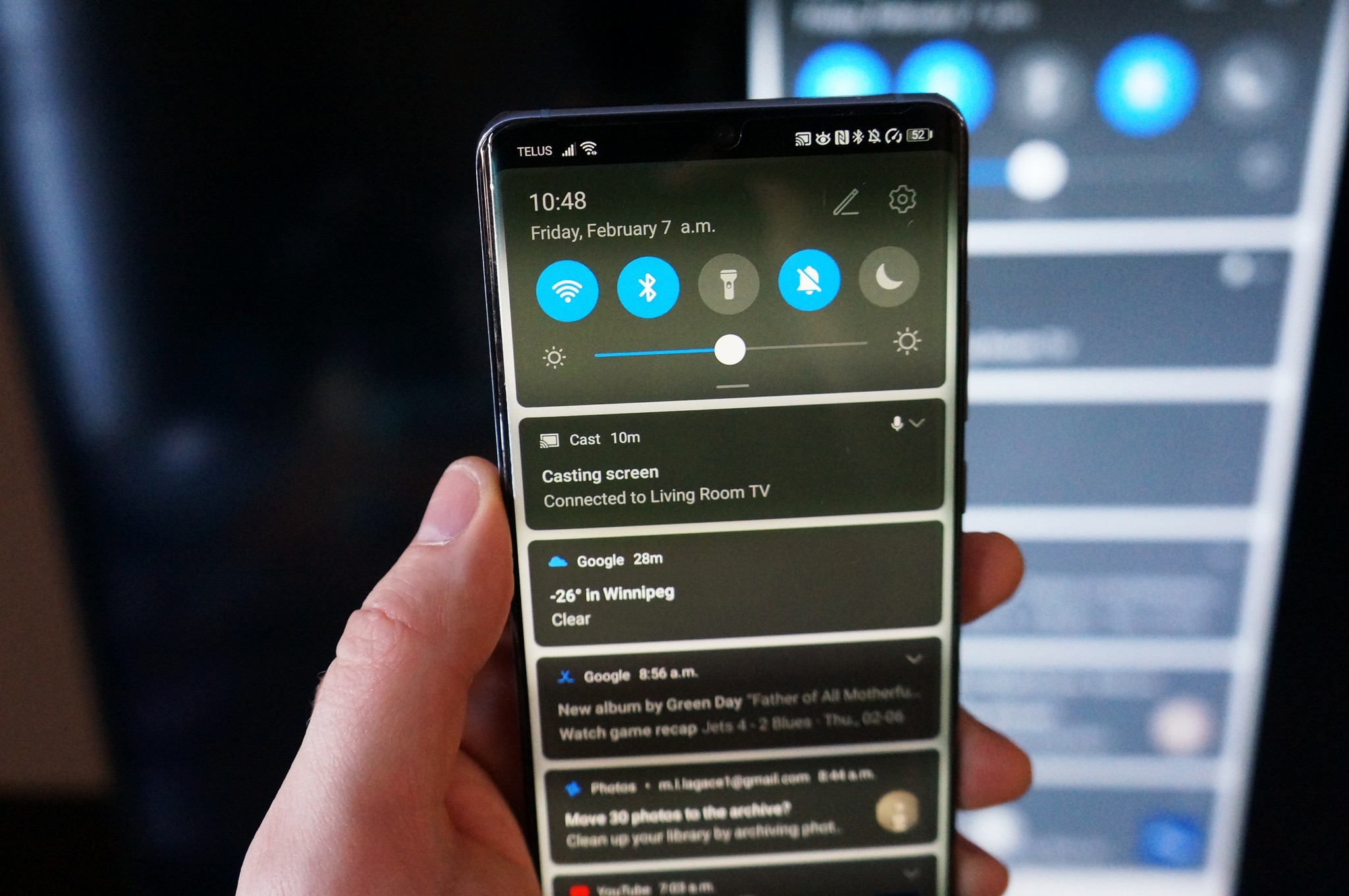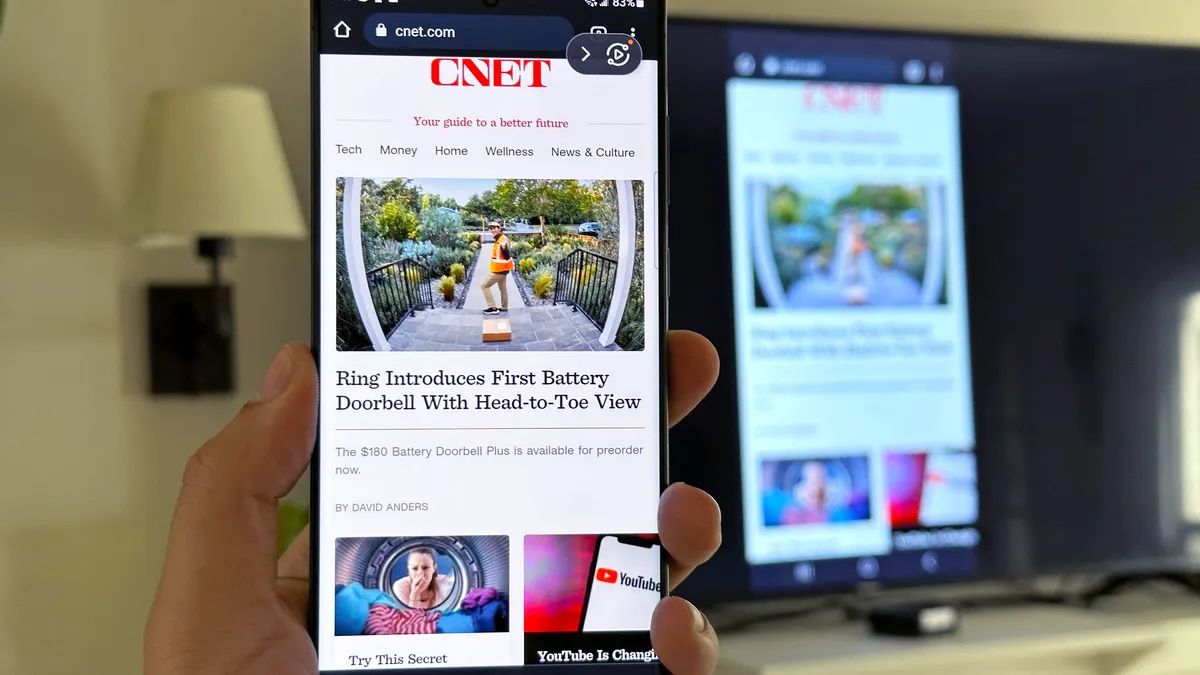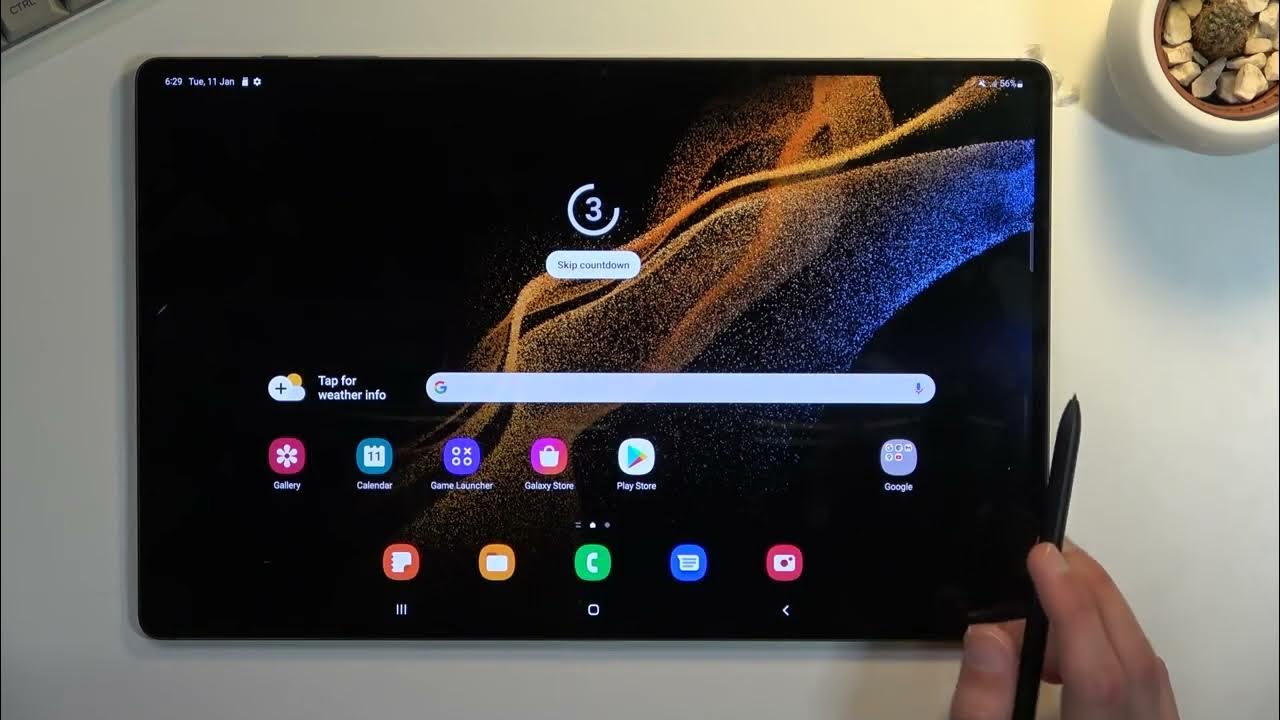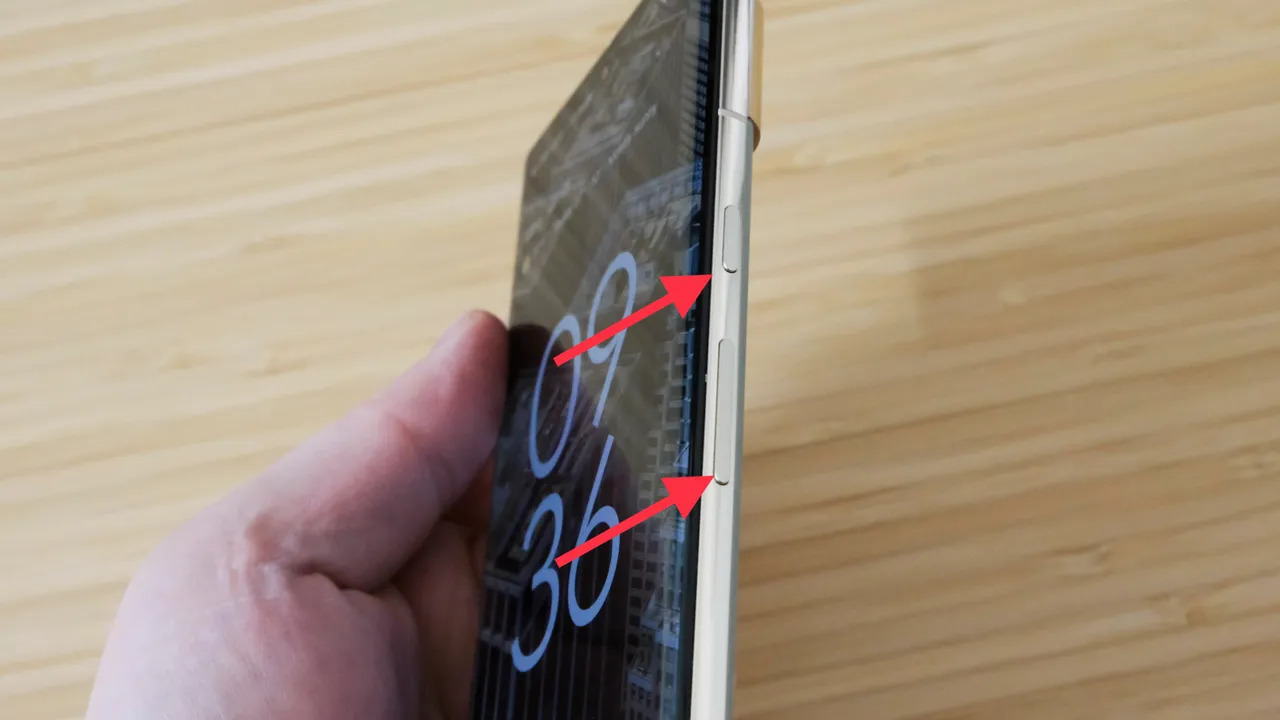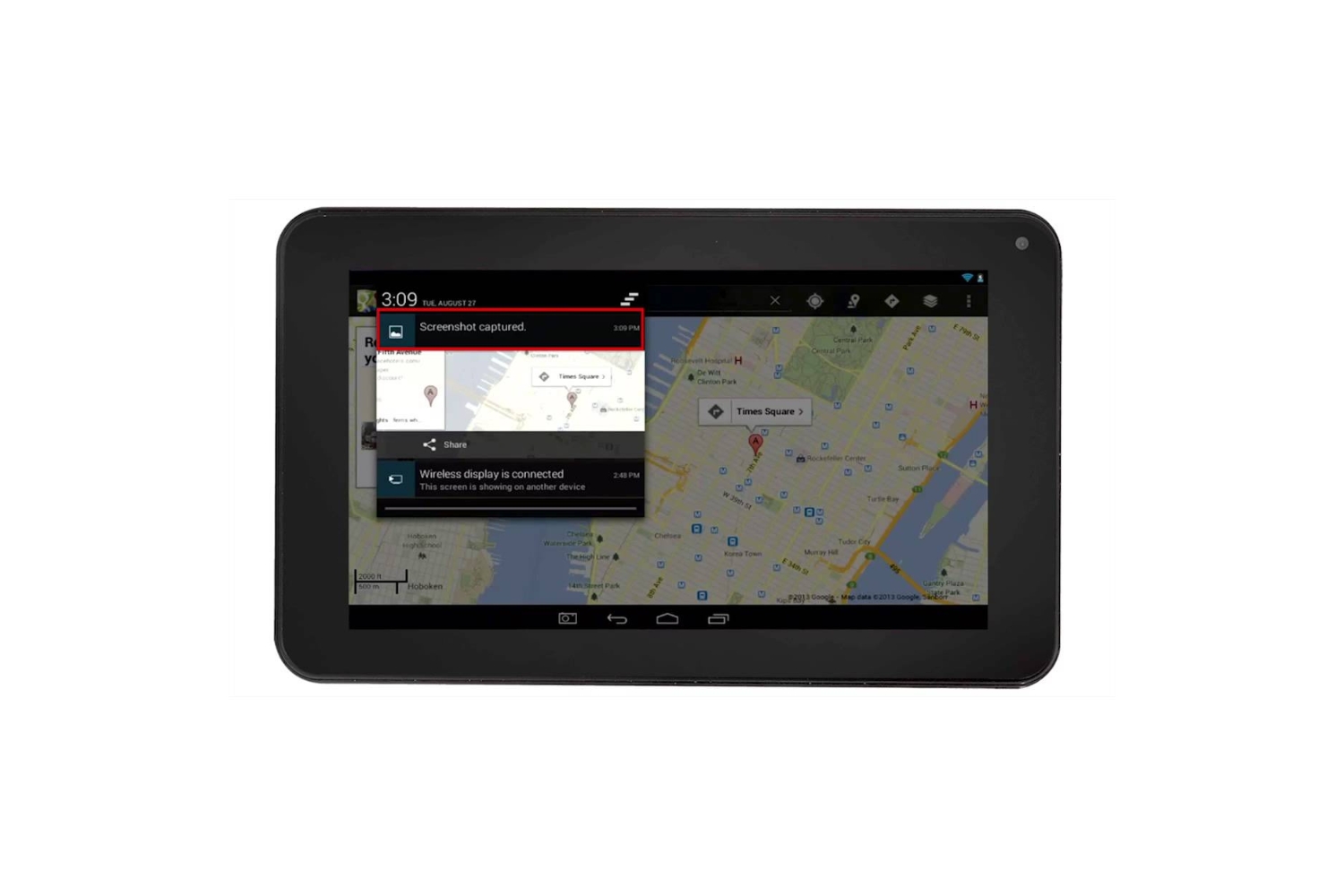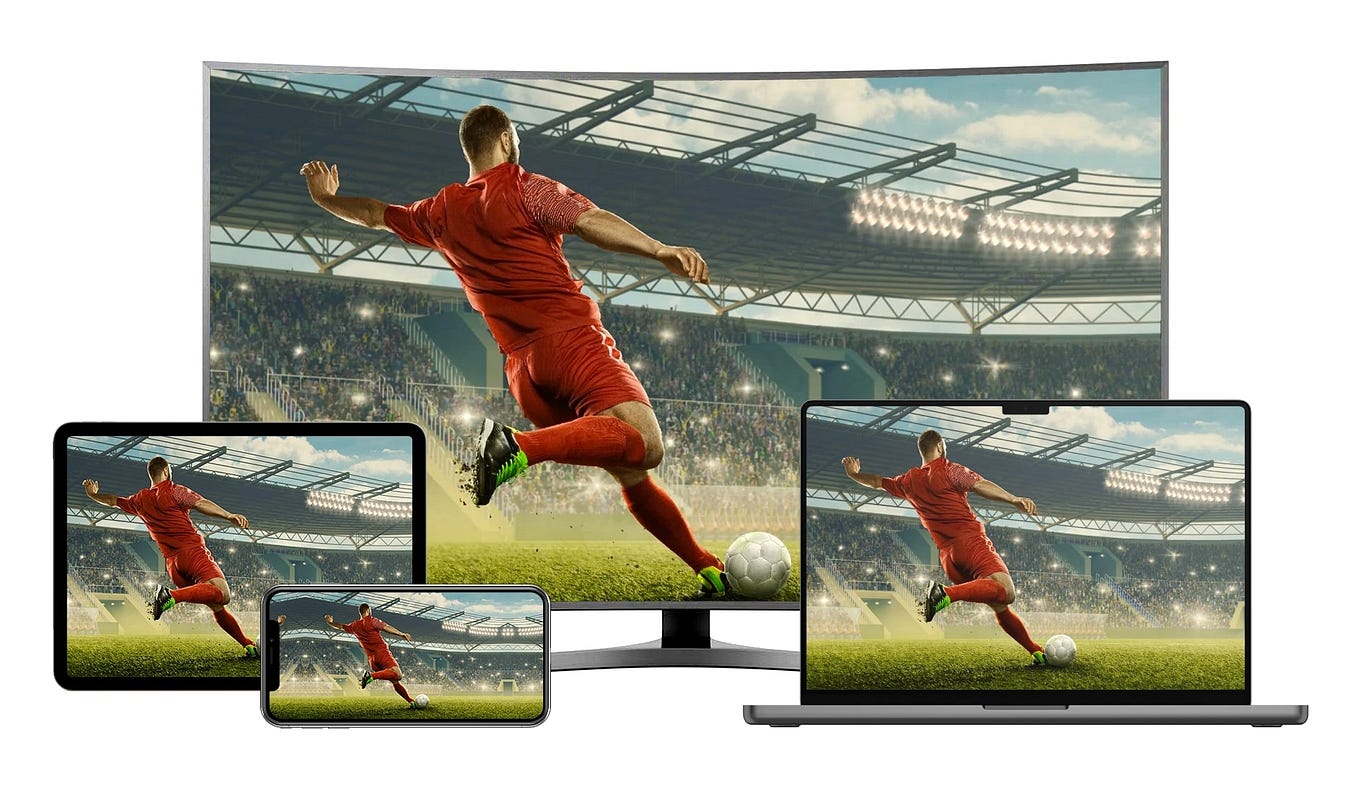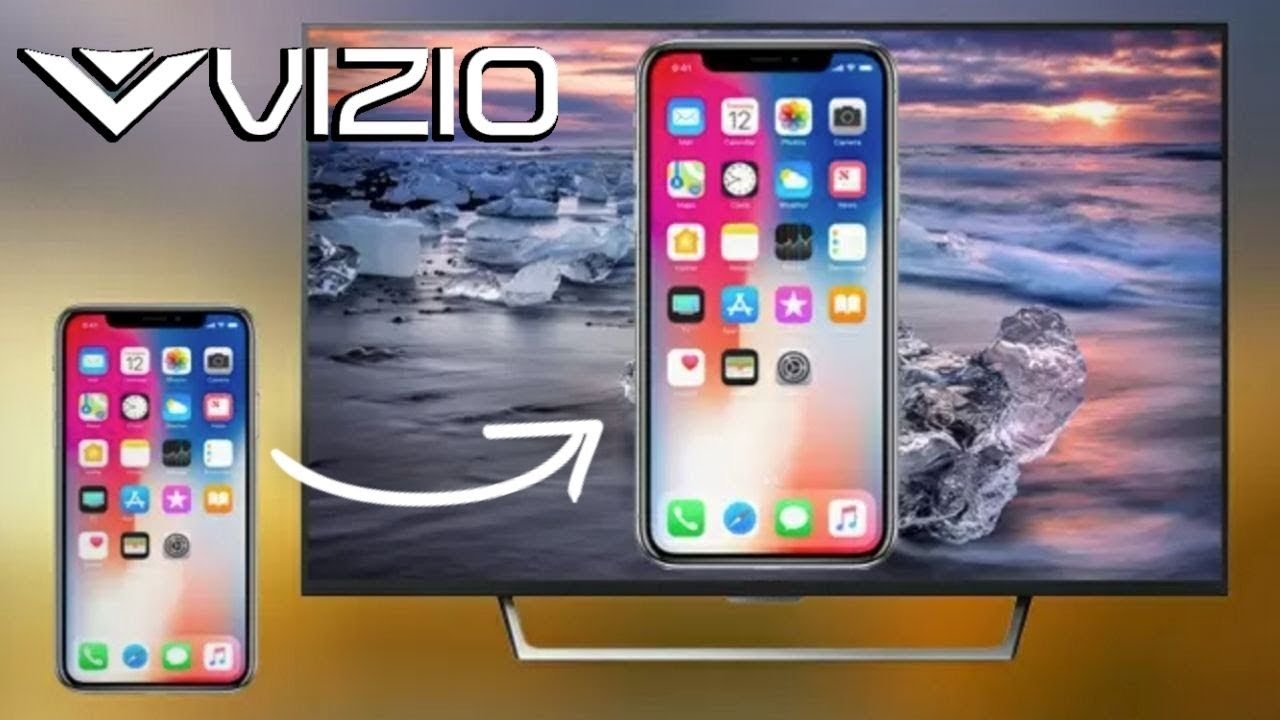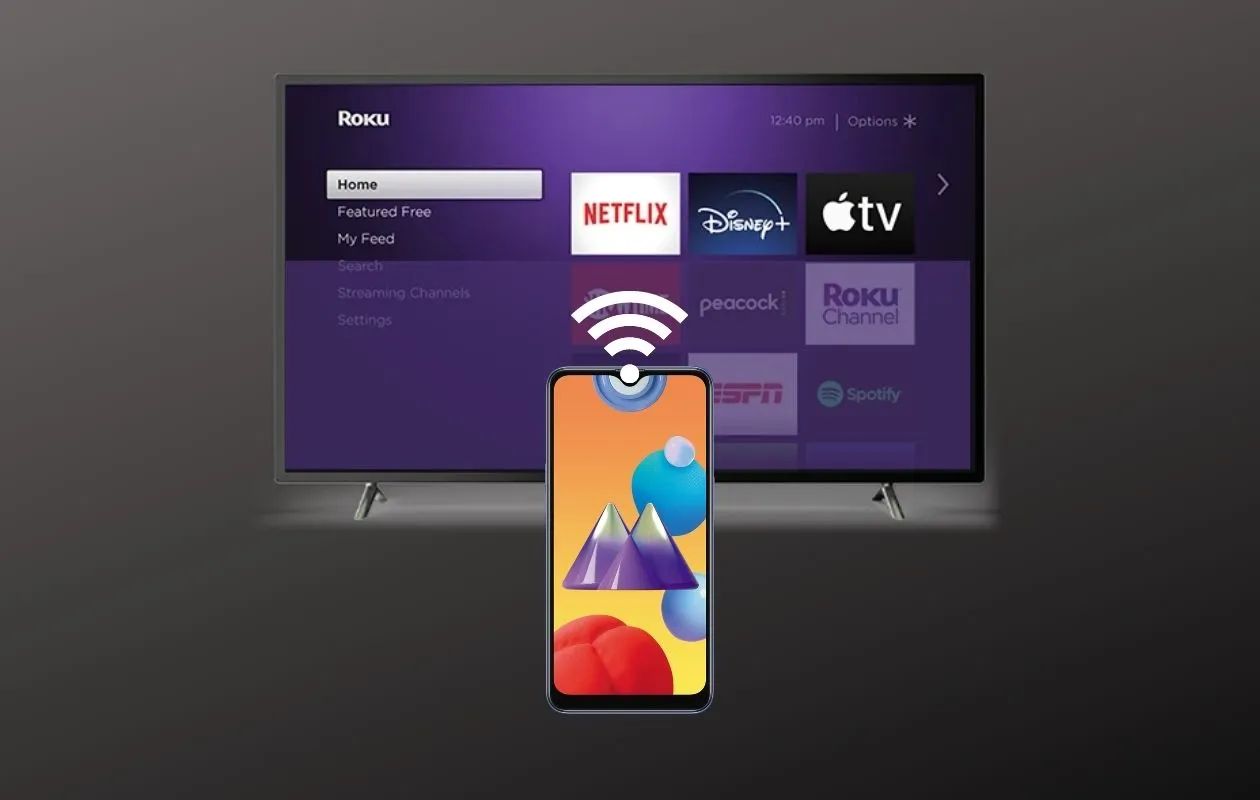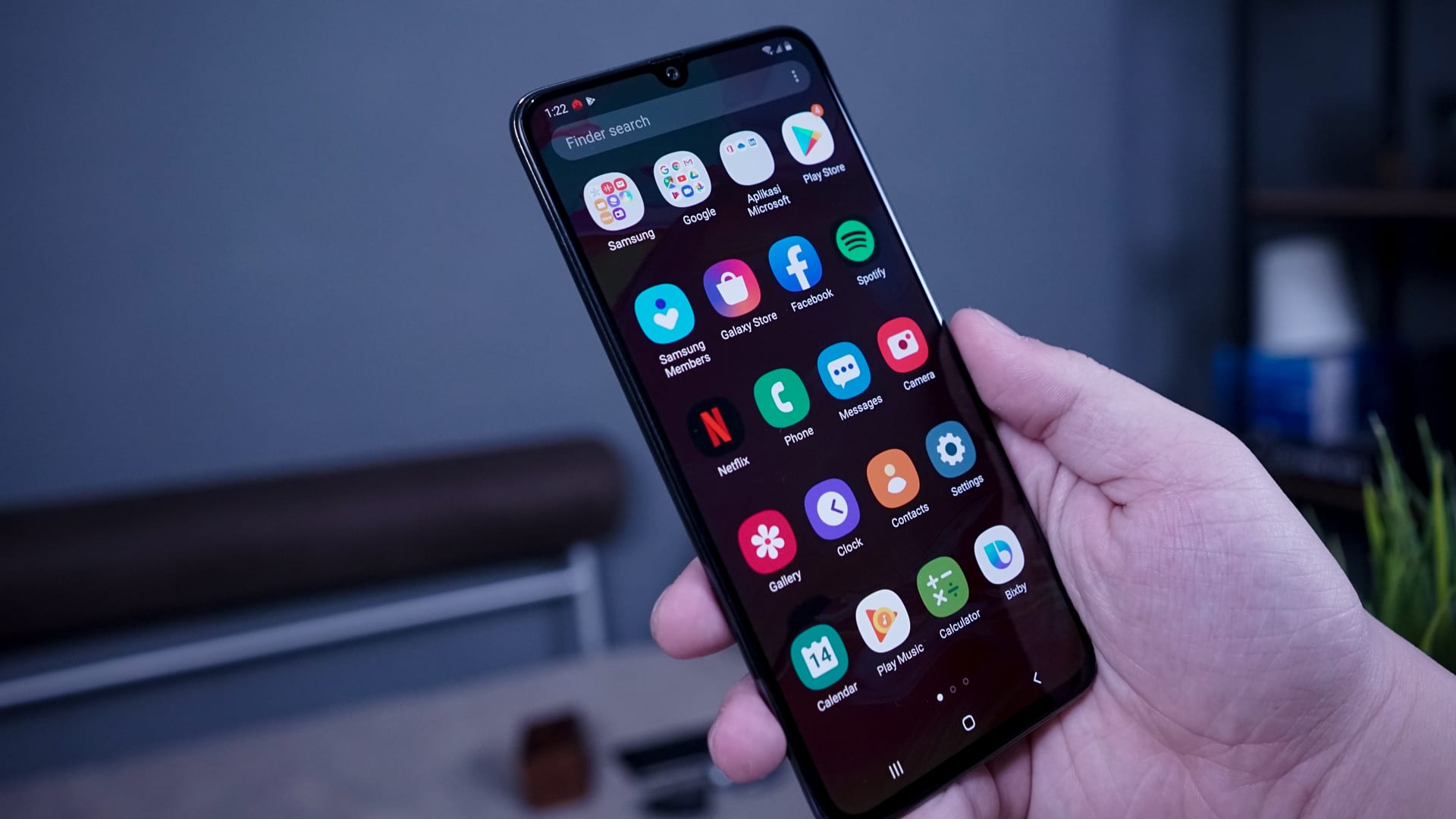Introduction
In today’s digital world, screen sharing has become an essential tool for collaboration, presentations, and remote work. Whether you need to showcase your Android device’s screen during a virtual meeting, seek technical support, or simply share content with others, knowing how to screen share on Android is vital.
In this article, we will explore various screen sharing methods available for Android users. We will discuss the built-in options provided by Android, as well as third-party screen sharing apps that offer additional features and flexibility.
Screen sharing allows you to broadcast your Android device’s screen in real-time to other participants, enabling them to see what you’re seeing. This can be incredibly useful when giving a presentation, demonstrating an app, or troubleshooting technical issues. By sharing your screen, you can effectively communicate your ideas and provide visual support to enhance collaboration and understanding.
Whether you’re a business professional, educator, or simply an Android enthusiast, learning how to screen share on Android can greatly enhance your communication and productivity. So, without further ado, let’s explore the various screen sharing options available for Android devices.
Understanding Screen Sharing on Android
Before diving into the various methods of screen sharing on Android, it’s important to understand the fundamentals of how screen sharing works. When you screen share on Android, you are essentially casting your device’s screen onto another screen or device.
Screen sharing on Android typically involves two primary components: the sender device (the device you want to share the screen from) and the receiver device (the device that will display the shared screen). The sender device can be an Android phone, tablet, or even a Chromebook, while the receiver device can be a computer, another Android device, or a smart TV.
When using built-in screen sharing options on Android, both devices need to be connected to the same Wi-Fi network or using a shared Bluetooth connection. This allows for a seamless and secure connection between the sender and receiver devices.
It’s important to note that screen sharing on Android is different from screen mirroring. Screen sharing focuses on the ability to share specific content or apps on your device’s screen, while screen mirroring replicates your entire screen onto another device. Screen sharing provides more control and flexibility in choosing what you want to display to others.
Additionally, when screen sharing on Android, it’s crucial to ensure that both the sender and receiver devices have the necessary permissions and settings enabled. This may include granting permission for the screen sharing app to access your device’s screen, enabling the necessary network connectivity options, and adjusting the display settings to optimize the screen sharing experience.
Now that you have a basic understanding of screen sharing on Android, it’s time to explore the various built-in screen sharing options provided by Android, as well as third-party screen sharing apps that can further enhance your screen sharing capabilities.
Built-in Screen Sharing Options
Android devices come equipped with a range of built-in screen sharing options that make it easy to showcase your screen to others. These options provide a convenient and straightforward way to share your Android device’s screen without the need for any additional apps or software.
One of the most common built-in screen sharing features on Android is the “Cast” or “Screen Mirroring” functionality. This feature allows you to wirelessly share your screen with compatible devices, such as smart TVs or streaming devices like Chromecast.
To use the built-in screen sharing feature, ensure that both your Android device and the receiving device are connected to the same Wi-Fi network. Then, follow these steps:
- Swipe down from the top of your Android device’s screen to open the Quick Settings panel.
- Look for the “Cast” or “Screen Mirroring” icon and tap on it.
- A list of available devices for screen sharing will appear. Select the desired device you want to cast your screen to.
- Your Android device’s screen will now be mirrored onto the selected device.
In addition to the built-in casting feature, some Android devices also offer a “Screen Recording” option. This feature allows you to record your screen activity and share it as a video file. It can be useful for creating tutorials, capturing gameplay, or documenting a problem to share with technical support.
To access the screen recording feature on your Android device, follow these steps:
- Open the Quick Settings panel on your Android device.
- Scroll to find the “Screen Record” or “Screen Recording” option and tap on it.
- Adjust any settings you want, such as recording audio or capturing touches.
- Tap the “Start” button to begin the screen recording.
- Your Android device’s screen will be recorded, and you can stop the recording at any time by tapping the stop button in the notification panel.
These built-in screen sharing options provide a quick and straightforward way to share your Android device’s screen with others. However, if you require more advanced features or specific functionality, you may want to consider using third-party screen sharing apps, which we will explore in the next section.
Using Third-Party Screen Sharing Apps
While the built-in screen sharing options on Android provide basic functionality, there are several third-party screen sharing apps available that offer additional features and customization options. These apps can be useful if you require more control over the screen sharing process or if you need to collaborate with others in a professional setting.
One popular third-party screen sharing app for Android is “TeamViewer.” TeamViewer allows you to remotely access and control your Android device from another computer or mobile device. It offers features such as file transfer, remote control, and real-time screen sharing, making it ideal for technical support or collaboration purposes.
Another popular option is “AirServer,” which turns your Android device into an AirPlay, Google Cast, or Miracast receiver. With AirServer, you can mirror your iPhone, iPad, Mac, or other Android devices to your Android phone or tablet. This is especially useful when you want to share your iOS device’s screen with an Android device or vice versa.
If you’re looking for a dedicated screen sharing app that offers a comprehensive set of features, “ApowerMirror” is worth considering. ApowerMirror allows you to mirror, record, and stream your Android device’s screen to various platforms, including computers, smart TVs, and projectors. It also supports remote control functionality, enabling you to navigate your Android device from your computer.
Additionally, many popular video conferencing apps have built-in screen sharing capabilities. Applications such as Google Meet, Microsoft Teams, and Zoom allow you to share your Android device’s screen during virtual meetings or presentations. These apps offer a seamless integration of screen sharing features with their video conferencing capabilities, making them convenient choices for collaborative work or online meetings.
When choosing a third-party screen sharing app, consider your specific requirements, such as the desired features, compatibility with other devices and platforms, and user-friendliness. It’s also important to ensure that the app is reputable, secure, and has positive reviews from other users.
By utilizing third-party screen sharing apps, you can enhance your screen sharing capabilities on Android and tailor the experience to suit your needs. Whether you need advanced features, cross-platform compatibility, or seamless integration with other applications, these apps provide a wide array of options for efficient and effective screen sharing.
Screen Sharing via Google Meet
Google Meet is a popular video conferencing platform that offers screen sharing capabilities for seamless collaboration and presentations. If you’re using Google Meet for your virtual meetings, sharing your Android device’s screen is a straightforward process.
To screen share via Google Meet on your Android device, follow these steps:
- Open the Google Meet app on your Android device and join a meeting or start a new one.
- Once you’re in the meeting, locate and tap on the “Present” button at the bottom of the screen.
- A pop-up menu will appear, offering different options for screen sharing. Select “Your entire screen” to share everything on your Android device’s screen, or choose “A window” to share a specific app or content.
- Grant the necessary permissions for Google Meet to capture your screen by following the on-screen prompts.
- Your Android device’s screen will now be shared with the participants in the Google Meet meeting.
During screen sharing in Google Meet, you have the option to enable or disable audio sharing as well. This allows you to provide commentary or narrate while sharing your Android device’s screen.
It’s important to note that screen sharing via Google Meet may require the latest version of the app and a stable internet connection. Certain features and availability may vary depending on your device and the version of Google Meet you’re using.
Google Meet is a versatile platform that offers more than just screen sharing. It also provides features such as chat, file sharing, and integration with other Google Workspace apps. This makes it a comprehensive solution for online meetings, presentations, and collaboration needs.
With Google Meet’s screen sharing functionality, you can easily present content, share apps, or demonstrate processes directly from your Android device. This feature is particularly useful for educators, business professionals, or anyone who needs to share visual content during virtual meetings or presentations.
Screen Sharing with Microsoft Teams
Microsoft Teams is a widely used communication and collaboration platform that offers screen sharing capabilities for seamless remote collaboration. If you’re using Microsoft Teams for your online meetings or work, sharing your Android device’s screen is a simple process.
To screen share via Microsoft Teams on your Android device, follow these steps:
- Open the Microsoft Teams app on your Android device and join a meeting or start a new one.
- Once you’re in the meeting, locate and tap on the “Share” button at the bottom of the screen. It may be represented by an icon that looks like a square with an arrow pointing upwards.
- A pop-up menu will appear, offering different options for screen sharing. Select “Screen” to share your entire Android device’s screen, or choose “Window” to share a specific app or content.
- Grant the necessary permissions for Microsoft Teams to capture your screen by following the on-screen prompts.
- Your Android device’s screen will now be shared with the participants in the Microsoft Teams meeting.
Microsoft Teams also provides additional features during screen sharing, such as the ability to enable or disable audio sharing, annotate on the shared screen, and pass control to other participants for collaborative interaction.
It’s important to ensure that you have the latest version of the Microsoft Teams app installed on your Android device to access the full range of screen sharing features. Additionally, a stable internet connection is crucial for a smooth screen sharing experience.
Microsoft Teams is a comprehensive platform that offers more than just screen sharing. It provides features such as chat, file sharing, collaboration tools, and integration with Microsoft Office apps. This makes it a powerful solution for remote teamwork, virtual meetings, and project collaboration.
With Microsoft Teams’ screen sharing functionality, you can effectively present your Android device’s screen, share content, or collaborate with others in real-time. Whether you’re conducting a team meeting, delivering a presentation, or seeking technical support, Microsoft Teams offers a user-friendly and versatile platform for seamless screen sharing on Android.
Screen Sharing with Zoom
Zoom is a popular video conferencing platform that provides robust screen sharing capabilities, making it a preferred choice for remote meetings, webinars, and presentations. If you’re using Zoom on your Android device, sharing your screen is a straightforward process.
To screen share via Zoom on your Android device, follow these steps:
- Open the Zoom app on your Android device and join a meeting or start a new one.
- Once you’re in the meeting, locate and tap on the “Share” button at the bottom of the screen. It usually appears as an icon with an arrow pointing upwards.
- A pop-up menu will appear, offering different options for screen sharing. Select “Screen” to share your entire Android device’s screen, or choose “Whiteboard” or “Content” to share specific content or apps.
- Grant the necessary permissions for Zoom to capture your screen by following the on-screen prompts.
- Your Android device’s screen will now be shared with the participants in the Zoom meeting.
During screen sharing on Zoom, you have the option to enable or disable audio sharing, as well as annotate on the shared screen. This allows for interactive and collaborative sessions, enabling participants to provide real-time feedback and engage in discussions.
It’s important to ensure that you have the latest version of the Zoom app installed on your Android device to access the full range of screen sharing features. Additionally, a stable internet connection is essential for a smooth screen sharing experience.
Zoom is known for its user-friendly interface, reliability, and a wide range of additional features such as chat, breakout rooms, and recordings. These features make Zoom a versatile platform for various collaboration needs, from small team meetings to large webinars.
Whether you’re presenting a slideshow, demonstrating an app, or seeking feedback, Zoom’s screen sharing functionality on Android provides a seamless and interactive experience. With its intuitive controls and extensive collaboration features, Zoom has become a go-to solution for remote communication and screen sharing.
Troubleshooting Screen Sharing Issues
While screen sharing on Android is generally a smooth and straightforward process, you may encounter occasional issues that can hinder the sharing experience. Understanding common problems and their potential solutions can help you troubleshoot and resolve any screen sharing issues efficiently.
Here are some common troubleshooting steps for screen sharing on Android:
1. Check Network Connection: Ensure that your Android device and the receiving device are connected to a stable Wi-Fi network or have a strong cellular data connection. Unstable network connections can cause interruptions or delays in screen sharing.
2. Grant Necessary Permissions: Make sure that you have granted the necessary permissions for the screen sharing app or platform to access your Android device’s screen. Go to your device’s Settings, find the app permissions, and enable permission for screen sharing.
3. Update the Screen Sharing App: Ensure that you are using the latest version of the screen sharing app or platform on your Android device. Developers frequently release updates to fix bugs and improve performance, so keeping the app up to date can help resolve compatibility issues.
4. Restart the Devices: Sometimes, simply restarting your Android device and the receiving device can resolve temporary glitches or conflicts that may be affecting the screen sharing functionality.
5. Disable Power Saving Mode: Some Android devices have power-saving modes that limit certain functionalities or restrict background processes. Disable power-saving mode to ensure optimal performance during screen sharing.
6. Clear App Cache: If you encounter persistent issues with a specific screen sharing app, try clearing the app’s cache and data. This can help resolve any corrupt files or settings that might be causing problems.
7. Test with Different Apps or Platforms: If you’re experiencing issues with one screen sharing app, try using a different screen sharing app or platform to see if the problem persists. It can help identify whether the issue is specific to the app or more general.
8. Seek Technical Support: If you’ve tried the above troubleshooting steps and still cannot resolve the screen sharing issue, reach out to the technical support team of the screen sharing app or platform for further assistance. They can provide specific guidance based on your device and the app’s features.
By following these troubleshooting steps, you can often overcome common screen sharing issues on Android devices. Remember that the specific steps may vary depending on the screen sharing app or platform you are using, so refer to their documentation or support resources for more detailed instructions.
Conclusion
Screen sharing on Android has become an essential tool for collaboration, remote work, and presentations. Whether you’re using the built-in options provided by Android or exploring third-party screen sharing apps, there are various methods available to share your Android device’s screen with others.
Built-in options like casting and screen recording offer convenient ways to share your screen without additional software. However, if you require advanced features or customization options, third-party apps like TeamViewer, AirServer, and ApowerMirror can provide enhanced functionality.
Furthermore, popular video conferencing platforms like Google Meet, Microsoft Teams, and Zoom seamlessly integrate screen sharing features. They offer a comprehensive collaboration experience by combining screen sharing with other communication tools.
When using screen sharing apps, it’s important to understand the process and ensure that you have the necessary permissions and settings enabled on your Android device. Additionally, if you encounter any issues during screen sharing, troubleshooting steps such as checking the network connection, updating the app, or seeking technical support can help resolve them.
Whether you’re giving a presentation, seeking technical support, or collaborating with remote team members, knowing how to screen share on Android can greatly enhance your communication and productivity. By effectively sharing your Android device’s screen, you can visually present information, showcase apps or content, and engage in real-time collaboration.
As technology continues to evolve, screen sharing on Android devices will only become more prevalent and powerful. Stay up to date with the latest screen sharing features and explore new apps and platforms to make the most of this valuable tool for collaboration and communication.







